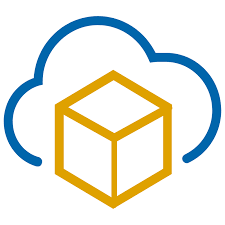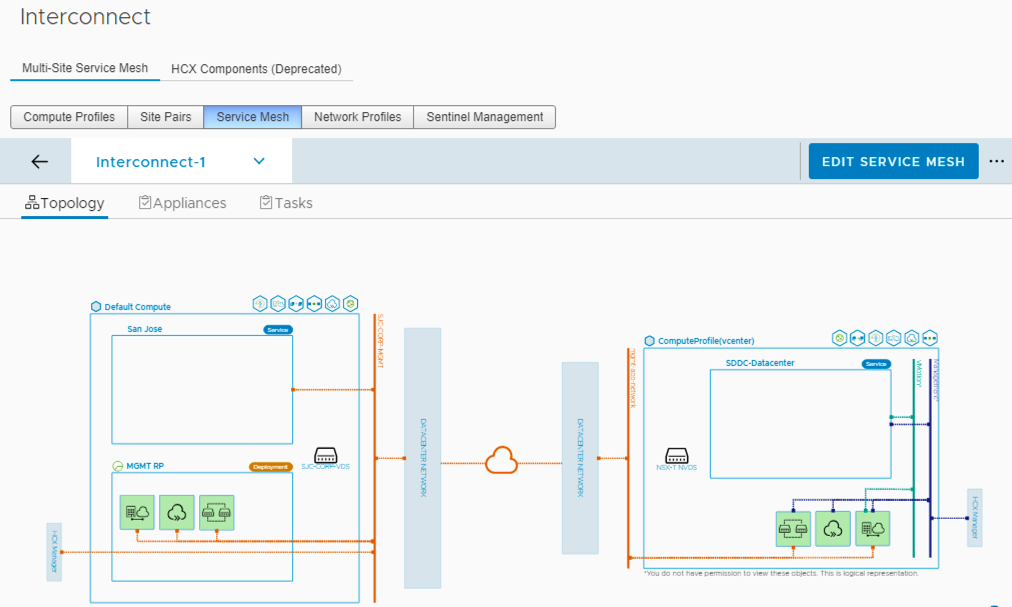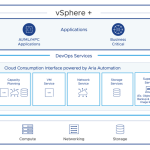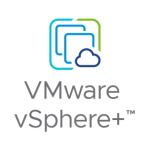In Part 2 of our Cloud Migration Series, I provided an overview of HCX including the various appliances that make up the solution and migration options you gain access to. With the number of appliances that must be deployed, configuration might seem daunting and complicated, but the Service Mesh aims to ease that process significantly.
The HCX Interconnect
Initial deployment of HCX is fairly simple; on the cloud side, it’s deployed with a single click. Following the cloud deployment, we simply deploy the HCX Manager on-premises.
Following this, additional appliances are required at both the source and destination sites for the various services HCX offers – WAN Optimization, Network Extension, Migration, Disaster Recovery. All of these appliances must be interconnected. The interconnect provides an optimized fabric for the HCX services allowing for secure migration and network extension. We utilize the Multi-Site Service Mesh interface to create the interconnect.
Multi-Site Service Mesh
Rather than deploying and configuring all of the appliances manually, the Service Mesh allows you to easily configure, deploy, and manage the appliance pairs. Within the Interconnect interface, we have options for Site Pairing, Compute/Network Profiles, Service Mesh, and Sentinel Management. The benefits of this interface include:
- Using the same configuration patterns across sites
- Allowing multiple HCX sites to utilize the same Compute and Network Profiles
- Deployment of appliances in parallel
- Deployment diagrams
- Operational task tracking
- Provided firewall rule requirements
The Compute and Network Profiles allow us to define details about how the appliances should be deployed. This includes placement details – Cluster, Resource Pool, and Datastore. We will also define the networks (Management, Uplink, vMotion, vSphere Replication, and Guest) that the appliances and services should use as well as IP pool information. At the end of the profile creation, you’re provided with WAN and LAN firewall rule tables to aid in the configuration of on-premises and cloud firewall rule creation. In the example below, we have created a simple Compute Profile selecting resources in our on-premises data center. Here we show that we will be deploying appliances to the vSAN datastore, in the MGMT Resource Pool of our San Jose data center. We will be using the SJC-CORP-MGMT port group on the SJC-CORP distributed switch.
A Site Pair is established for the connection between HCX Managers on-premises and in VMware Cloud on AWS. This allows for full management, authentication, and orchestration of HCX services between sites. There are a few different HCX site topologies that can be used:
- One to One: One source and one destination
- Many to One: Multiple source sites to a single destination (think multiple on-premises data centers to a single VMware Cloud on AWS SDDC)
- One to Many: A single source site to multiple destinations (think a single large on-premises data center to multiple VMware Cloud on AWS SDDCs)
Below, you can see that we’ve established a site pair from our on-premises data center in San Jose to our VMware Cloud on AWS SDDC in US West 2 (Oregon).
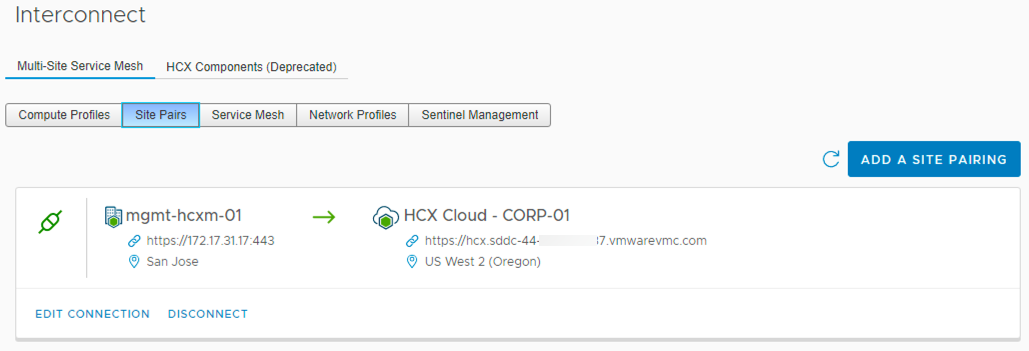
The Service Mesh allows us to define the profile pairs at both sites, and once created, deploys the service appliances automatically. This also provides you with a topology diagram, a list of appliances, and running/completed tasks.
Remember, HCX is an invaluable tool for workload mobility that’s included with VMware Cloud on AWS. The Multi-Site Service Mesh really simplifies the deployment and configuration of HCX overall. This allows you to quickly lay the groundwork to start extending networks and migrating virtual machines successfully to the cloud. If you’d like to step through the configuration yourself to get a better understanding, check out our feature walkthrough.
For a deeper dive into all things HCX, the official VMware HCX blog has a wealth of knowledge. Stay tuned for the final part of our Cloud Migration Series where we’ll discuss planning, sizing, and additional considerations.
Cloud Migration Series
Part 1: Getting Started with Hybrid Cloud Migration
Part 2: VMware HCX Overview
Part 3: The HCX Interconnect and Multi-Site Service Mesh
Part 4: Planning and Considerations
Resources
- You can learn more about our VMware Cloud on AWS and HCX services at the VMware Cloud on AWS and VMware HCX websites
- Follow us on Twitter @vmwarecloudaws and @VMwareHCX and give us a shout with #VMWonAWS and #HCX
- Watch informative demos, overview videos, webinars and hear from our customers: VMware Cloud on AWS on YouTube
- Try the VMware Cloud on AWS Hands-on Lab for a first-hand immersive experience
- Read our latest VMware Cloud on AWS blogs
- Follow the VMware Cloud on AWS and VMware HCX Release Notes for continued updates
